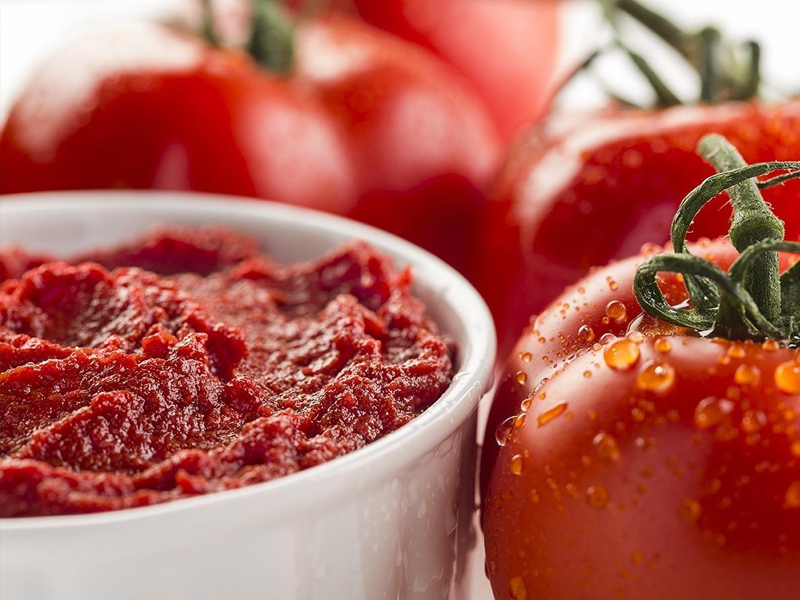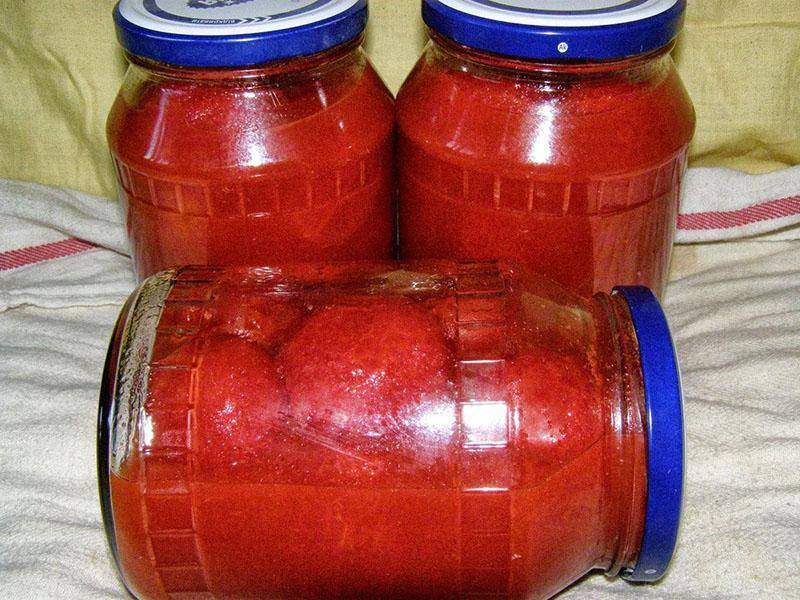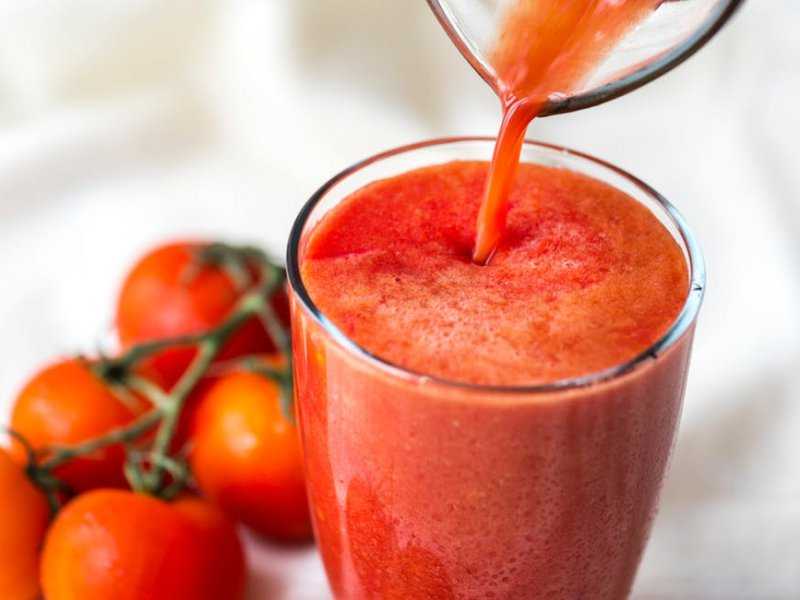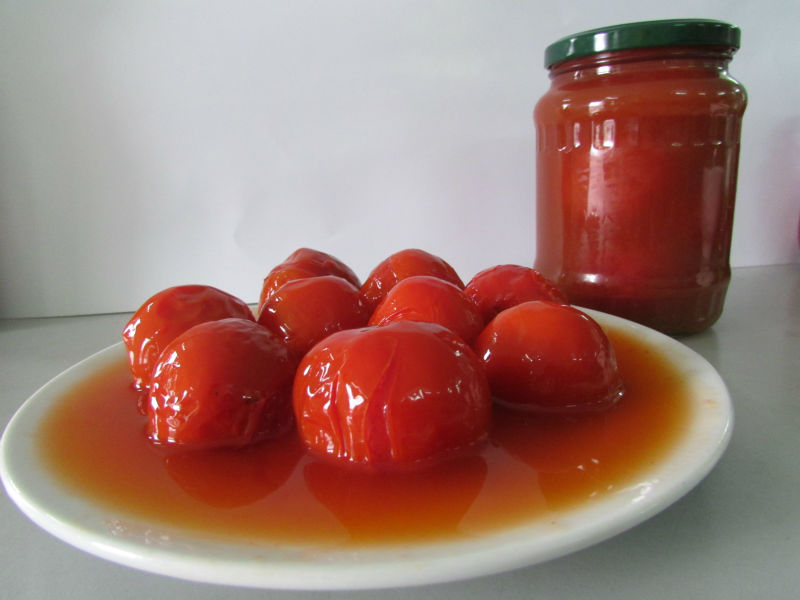Transforming Tomato Paste into Flavorful Tomato Sauce: A Comprehensive Overview
Introduction:
Tomato sauce is a versatile and essential ingredient in numerous culinary creations, ranging from pasta dishes to soups, stews, and pizzas. Tomato paste, on the other hand, provides a concentrated form of tomato flavor and is commonly used as a base for sauces. In this article, we will explore the process of transforming tomato paste into delicious tomato sauce, highlighting the various steps involved, along with the benefits, tips, and tricks to achieve the desired taste and texture.
1. Understanding Tomato Paste:
Tomato paste is produced by cooking down ripe tomatoes into a thick and concentrated form. This process involves removing the tomato seeds and skins, which are then strained to obtain a smooth and homogeneous paste. Tomato paste offers a deep and rich flavor due to its reduced water content, making it an excellent foundation for creating tomato sauces.
2. Selecting the Right Tomato Paste:
When it comes to selecting tomato paste for transforming into sauce, it is crucial to consider factors such as quality, consistency, and flavor. Opt for tomato paste made from ripe and flavorful tomatoes and avoid those with additives or preservatives. Look for concentrate variants that offer a rich and intense tomato taste.
3. Diluting Tomato Paste:
The first step in turning tomato paste into sauce is diluting it with liquid. This liquid can be water, broth, or even wine, depending on the desired flavor profile. Start by adding a small amount of liquid to the tomato paste and gradually increase it while stirring continuously. This process ensures proper blending and prevents clumps.
4. Enhancing Flavor:
While tomato paste provides a concentrated tomato flavor, additional ingredients can be incorporated to enhance the taste and complexity of the sauce. Some common additions include garlic, onions, herbs (such as basil, oregano, or parsley), spices, and even a touch of sweetness with sugar or honey. Experimenting with different combinations can help you create a sauce tailored to your preferences.
5. Simmering and Reducing:
Simmering the diluted tomato paste is a critical step that helps develop the flavors and improve the consistency of the sauce. Allow the mixture to cook on low heat, stirring occasionally to avoid sticking or scorching. This process also helps reduce excess moisture, resulting in a thicker and richer sauce.
6. Achieving the Desired Consistency:
The ideal consistency of tomato sauce can vary depending on personal preference and the intended recipe. For a thick and hearty sauce, it is advisable to simmer for a longer duration, allowing the flavors to meld together and the liquid to reduce further. Conversely, for a thinner sauce, a shorter simmering time may be sufficient.
7. Managing Acidity:

Tomatoes are naturally acidic, and some individuals may prefer a less tangy sauce. To mellow the acidity, consider adding a pinch of baking soda while simmering. This neutralizes the acidity without compromising the overall flavor profile. Additionally, a splash of vinegar or lemon juice can add a subtle tang, enhancing the overall taste of the sauce.
8. Texture and Smoothness:
Tomato sauce can either be smooth or chunky, depending on personal preference and the desired application. To achieve a smoother sauce, use a blender or food processor to puree the cooked mixture. Alternatively, leave it as is for a chunky texture, ideal for dishes like chili or stews. Straining the sauce through a sieve can also remove any undesirable seeds or skins.
9. Storing and Preserving:
Once tomato paste has been transformed into sauce, proper storage is essential to maintain its quality and flavor. Sterilized glass jars or airtight containers should be used to store the sauce in a cool and dark place, such as a pantry or refrigerator. For longer storage, consider utilizing canning techniques or freezing the sauce in portioned quantities.
10. Tips and Considerations:
– Experiment with different tomato paste brands and varieties to find your preferred base flavor.
– Adjust the liquid-to-paste ratio according to the recipe and desired consistency.
– Taste the sauce periodically during the simmering process and adjust the seasonings if necessary.
– Use high-quality ingredients to achieve a flavorful and delicious sauce.
– Personalize your sauce by adding additional vegetables, meats, or spices based on the desired recipe.
Conclusion:
Transforming tomato paste into tomato sauce offers countless possibilities for creating flavorful dishes. Understanding the process and experimenting with ingredients and techniques can help you achieve a sauce that perfectly complements your culinary creations. Whether it’s a traditional marinara or a unique twist on a classic recipe, mastering the art of tomato sauce preparation opens up a world of delicious opportunities.I. The Market for Tomato Sauce:
The market for tomato sauce has experienced steady growth over the years, driven by the rising demand for convenience foods and the popularity of Italian cuisine worldwide. Tomato sauce is a staple ingredient in households and restaurants, making it a lucrative sector for businesses to explore.
1. Market Size and Trends:
The global tomato sauce market is expected to reach a value of USD 41.75 billion by 2027, registering a CAGR of 2.9% from 2020 to 2027. This growth can be attributed to factors such as increasing urbanization, busy lifestyles, and the growing preference for ready-to-use food products.
2. Key Players:

The market for tomato sauce is highly competitive, with numerous established players and new entrants vying for market share. Some of the prominent companies in the industry include The Kraft Heinz Company, Barilla G. e R. F.lli S.p.A., Conagra Brands, Inc., and Del Monte Foods, Inc.
3. Product Differentiation:
With a wide range of tomato sauce products available in the market, businesses need to focus on product differentiation to stand out from the competition. Differentiation can be achieved through factors such as unique flavors, organic or gourmet options, and packaging innovations.
4. Distribution Channels:
Tomato sauce is distributed through various channels, including supermarkets and hypermarkets, convenience stores, online platforms, and foodservice providers such as restaurants and cafeterias. Understanding consumer preferences and developing strategic partnerships with distributors is crucial for businesses to reach their target audience effectively.
II. Opportunities for Tomato Paste Manufacturers:
Tomato paste manufacturers can leverage their existing production capabilities to enter the tomato sauce market. This provides an opportunity to expand their product portfolio and cater to a broader customer base. Here are some key considerations for tomato paste manufacturers looking to venture into tomato sauce production:
1. Utilize Existing Infrastructure:
Having an established manufacturing facility for tomato paste gives manufacturers a head start in the tomato sauce production process. Existing infrastructure can be used to accommodate the additional equipment and processes required for sauce production, reducing initial investment and allowing for a smoother transition.
2. Quality Control:
Maintaining quality control throughout the tomato sauce production process is essential. Manufacturers should ensure that the tomatoes used for both the paste and sauce production meet the required standards. Implementing rigorous quality control measures at every stage, from sourcing to packaging, is vital for building customer trust and brand reputation.
3. Supply Chain Management:
Understanding the tomato supply chain and ensuring a reliable and consistent supply of high-quality tomatoes is vital for tomato sauce production. Building strong relationships with farmers, implementing effective quality control procedures, and exploring potential partnerships with tomato growers or cooperatives can help manufacturers secure a steady tomato supply.
4. Packaging and Branding:
Investing in attractive and convenient packaging is crucial for attracting consumers and standing out in the market. Additionally, creating a strong brand identity through effective branding and marketing strategies can help manufacturers position their tomato sauce products as premium offerings.
III. Potential Challenges and Solutions:
While entering the tomato sauce market presents numerous opportunities, businesses may also face challenges along the way. Recognizing these challenges and implementing effective solutions is key to ensuring success. Some common challenges include:

1. Shelf-Life and Preservation:
Tomato sauce can spoil quickly if not properly stored and preserved. Manufacturers need to invest in robust preservation techniques, such as canning or refrigeration, to ensure the sauce’s shelf-life. Communicating the importance of proper storage and offering clear instructions to consumers can help maintain product quality.
2. Price Competitiveness:
The market for tomato sauce can be highly price-sensitive, with consumers often opting for products that offer the best value. Manufacturers need to strike a balance between quality and affordability to remain competitive. Streamlining production processes, optimizing supply chain efficiency, and exploring cost-saving measures can help businesses maintain competitive pricing.
3. Consumer Preferences and Health Consciousness:
As consumers become increasingly health-conscious, there is growing demand for healthier and cleaner-label tomato sauce options. Manufacturers should consider incorporating organic ingredients, reducing sodium content, or eliminating artificial additives to cater to this segment of the market.
4. Product Development and Innovation:
To stay ahead in the market, businesses must focus on product development and innovation. This can include launching new flavors, exploring unique packaging options, or incorporating trending ingredients. Keeping a close eye on consumer trends and preferences can provide valuable insights for product development.
IV. Marketing and Promotion Strategies:
Effective marketing and promotion strategies are crucial for businesses to gain visibility and reach their target audience. Here are some strategies that can help tomato sauce manufacturers market their products successfully:
1. Digital Marketing:
Investing in online marketing is essential in today’s digital age. This includes creating an engaging website, utilizing social media platforms, and leveraging online advertising to raise brand awareness and engage with consumers.
2. Influencer Partnerships:
Collaborating with food influencers, bloggers, or chefs can help generate buzz and increase brand credibility. Partnering with influential figures in the culinary world can expose the brand to a wider audience and create a sense of trust and authenticity.
3. Sampling and Tastings:
Organizing sampling events in supermarkets, food festivals, or partnering with local restaurants can provide an opportunity for consumers to experience the flavor and quality of the tomato sauce firsthand. Offering tastings can help build brand loyalty and increase product trial.
4. Packaging Design:

Investing in eye-catching and informative packaging design is essential for attracting consumers and standing out on supermarket shelves. Clear labeling, enticing visuals, and concise product descriptions can help communicate the product’s qualities and benefits effectively.
Conclusion:
Transforming tomato paste into tomato sauce presents an exciting opportunity for businesses to tap into the growing market demand for this versatile ingredient. By understanding market trends, leveraging existing infrastructure, and implementing effective marketing strategies, businesses can position themselves for success in the tomato sauce industry. Overcoming challenges and staying ahead through product development and innovation will help businesses thrive in this competitive market, creating flavorful and delicious tomato sauces for consumers worldwide.









